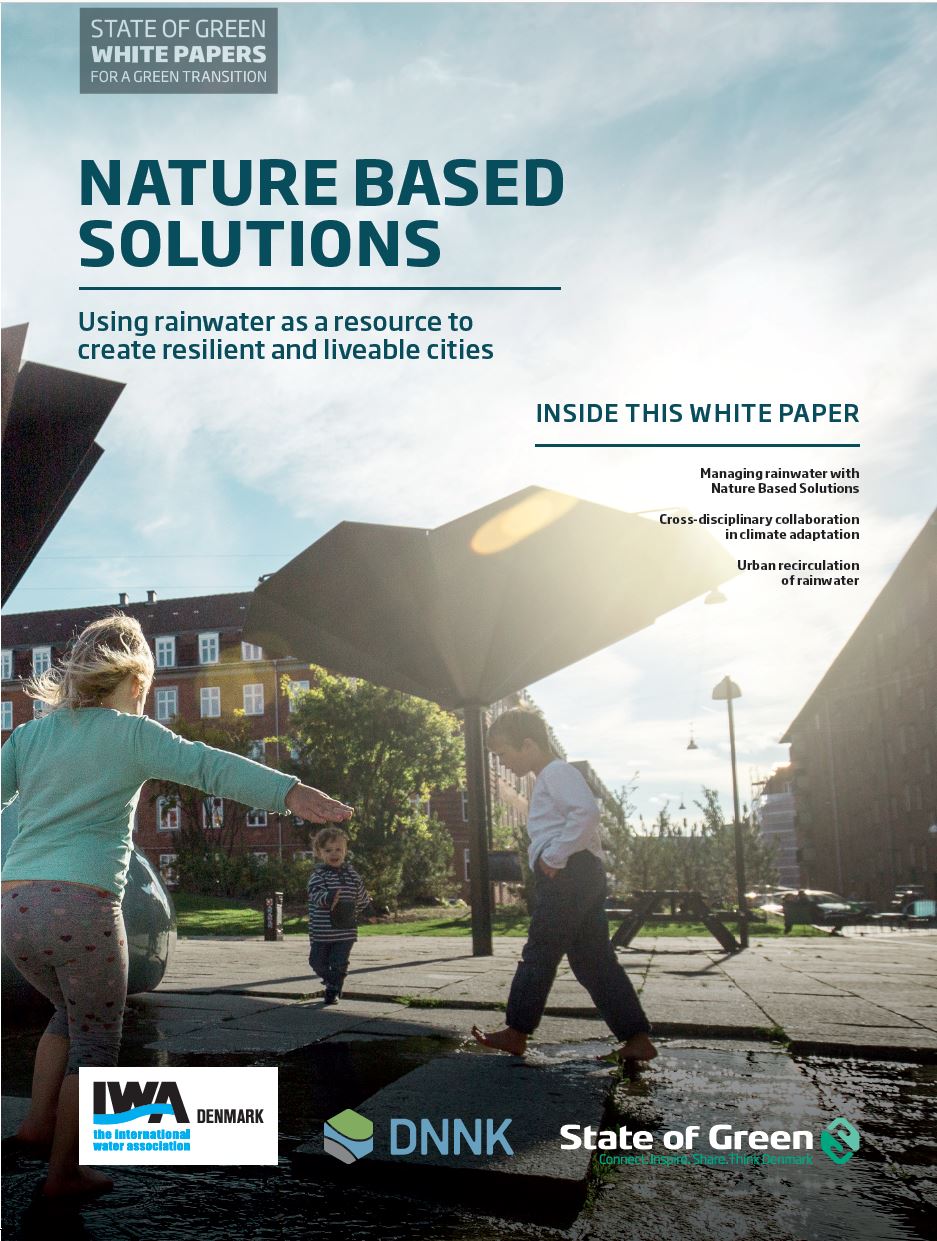Download our publication on nature-based solutions today
This article is part of our publication ‘Nature-based solutions’.
Download nowPerspective
Nature based solutions


Water crosses both administrative and geographical borders. Danish experience shows that collaboration across disciplines and institutions can create valuable synergies; resulting in greener and more liveable cities with a higher degree of recreational value for the local community that also increase biodiversity and lift environmental standards. The collaborative approach is, however, challenged by the fact that the different parts of the water cycle, i.e. sea, sewage, rainwater, rivers, lakes and groundwater, are often regulated by different legislative bodies.
The responsibility for climate adaptation is often divided between municipalities, water utility companies and private property owners. This is also the case in Denmark. Danish municipalities are required to include climate adaptation plans in their local development plans. In order to assist the municipalities, the Danish Nature Agency has developed a set of guidelines and tools for climate adaptation plans, providing inspiration on how municipalities can manage climate adaptation as part of their overall planning process to create green-blue liveable cities of the future. In correlation with the Danish Water Sector Act, expansions of the sewerage system are managed by water utility companies and financed through water tariffs. Due to a specific co-financing regulation, water utilities can help municipalities and private owners finance climate adaptation projects. The financing can be given to projects that are based on above-surface solutions, such as roads, water courses and recreational areas. As Danish water utilities have a
monopoly on managing water and sewage, their activities and investments are regulated by the Water Utility Secretary under the auspices of the Danish Competition and Consumer Authority, which secures efficiency and high standards on water quality, security of supply and general performance.

This article is part of our publication ‘Nature-based solutions’.
Download nowUsing a cross-disciplinary, cross-institution and watershed-based multiple stakeholder approach can increase t he sense of ownership by parties involved, of solutions such as NbS. Furthermore, by using this holistic approach, solutions often have a higher degree of synergy with other activities taking place in the municipalities. The results are often more liveable cities with a higher degree of recreational value for the local community and higher environmental standards.
Experience from Danish NbS projects shows that when city planning, construction, environmental issues, financing mechanisms and stakeholder relations are all addressed early on in the project’s development phase, NbS projects are more likely to become successful. It is thus crucial to identify all
relevant stakeholders and invite them to start a dialogue as early on in the process as possible.
To create the necessary momentum and ownership of climate adaptation projects, urban planners, environmental managers and engineers from the municipal departments often join forces with engineers and planners from water utilities at an early stage. To ensure buy-in from the local community, local citizens, property owners, local businesses and environmental NGOs are also involved in the process. A strong use of digital tools and platforms make the project more accessible for all stakeholders, including the ability to follow and comment on the project as it takes form.
Using the UN Sustainable Development Goals as key performance project indicators ensure both the right project design and increased local community engagement. This could be a local partnership using climate adaption projects to flood drained low-lying farmland and wetlands, reducing greenhouse gas emissions and urban flooding and at the same time creating more biodiversity, nature and areas for recreation, contributing to SDG 6, 11, 13, 15 and 17.
publications
Climate change adaptation
+11